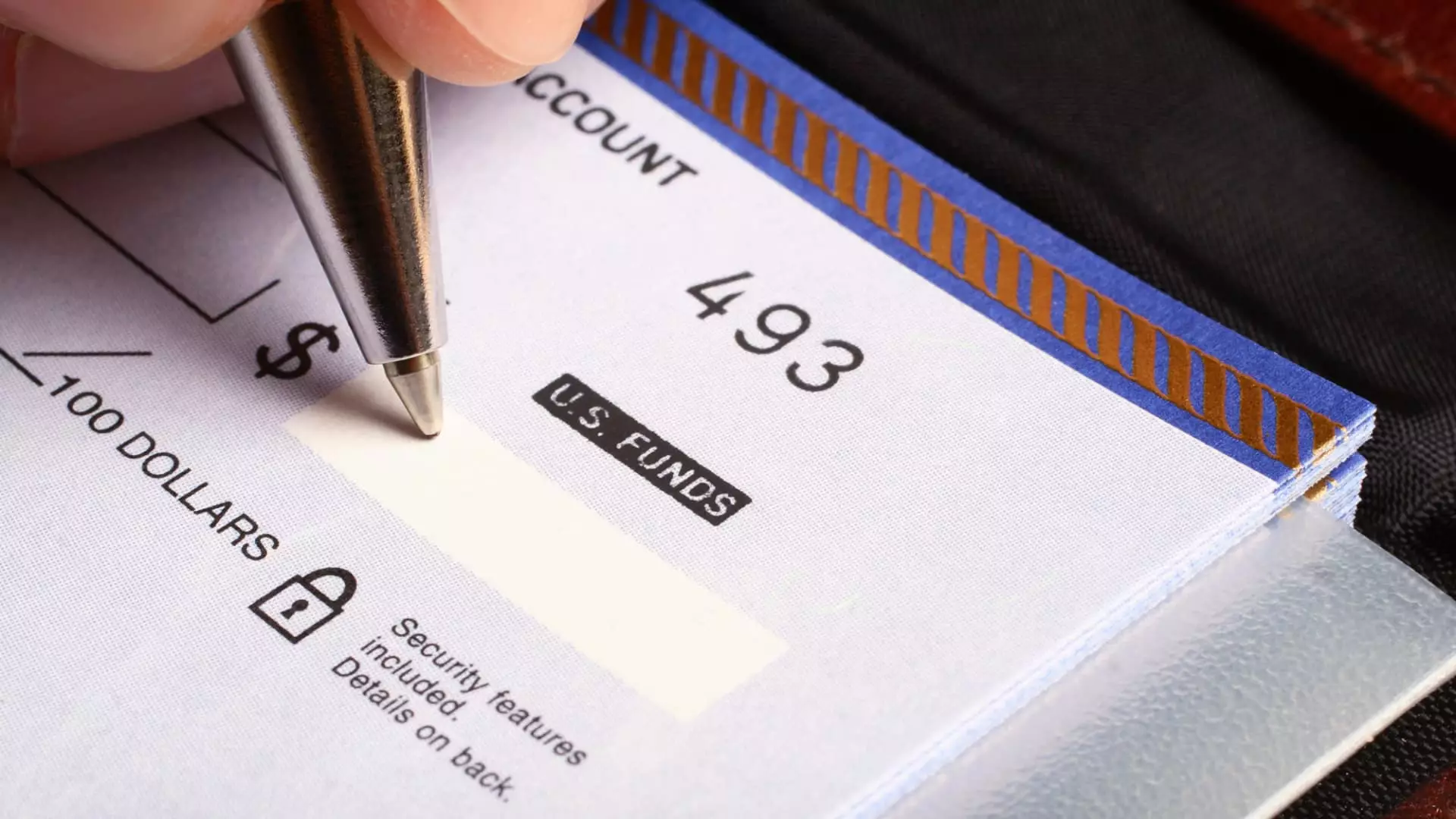The announcement that the federal government is phasing out paper checks is more than just a bureaucratic formality; it marks a significant milestone in the evolution of financial transactions in the United States. Under an executive order signed by President Donald Trump, all federal departments and agencies must transition to electronic payment methods by September 30. This decision reflects the reality that paper checks, once a staple of financial life, have become an archaic remnant of past banking practices.
The looming deadline emphasizes the urgency of embracing modern payment technologies. As society grapples with a host of financial challenges, such as rising fraud rates and inefficiencies associated with paper checks, it’s clear that the costs of maintaining an outdated system are no longer justifiable. Banks and monetary authorities are rightly celebrating this decision; it is an inevitable step toward safeguarding government finances against fraud, delays, and mismanagement.
Risks of the Paper Check Era
While the nostalgia for paper checks lingers, the reality is grim. Recent reports indicate that the federal government could lose between $233 billion and $521 billion annually due to fraud—a staggering figure that illustrates the inherent risks of paper-based transactions. Criminal gangs are increasingly targeting check fraud, and reports indicate that the elderly and low-income populations remain particularly vulnerable to these scams.
Digital payments, in contrast, offer not only convenience but also enhanced security features such as encryption and real-time monitoring. As the modern financial ecosystem pushes for rapid transaction processing, checks appear sluggish in comparison. They’ve been rendered almost obsolete in an age where instant access to funds is not just desirable, but necessary.
The push for electronic payments marks a crucial evolution in financial services. It signifies a significant investment in safeguarding vital government resources—from tax returns to Social Security disbursements—by leveraging technology to hasten transactions and protect personal information.
Who Gets Left Behind?
As with any major change, the question of who will be left behind looms large. Millennials and Gen Z have already shifted toward electronic and contactless payment methods, largely abandoning checks altogether. However, the older demographic, particularly those dependent on Social Security and other governmental aids, may find themselves in a precarious position.
In an era where nearly half of American adults reportedly haven’t written a check in the last year, it’s essential to acknowledge that this digital divide puts a section of our population at risk. Vulnerable groups including senior citizens and those with limited access to technology may struggle to adapt to this faster-paced environment. While efforts are underway to provide access to online banking tools, the reality is that financial literacy and access to technology can vary widely.
Federal agencies must prioritize strategies that facilitate this transition for those who may feel ostracized by a system that seems to cater primarily to tech-savvy young adults.
Financing the Future: The Inevitable Digitalization
Even though the decline of paper checks has been evident, the executive order serves as an official acknowledgment that the future is now digital. Public opinion appears to favor this shift, particularly as the pandemic has accelerated the adoption of electronic transactions. The landscape of commerce and banking is evolving, and with it, the expectations of consumers.
Businesses are already moving away from accepting checks as a viable payment form, further corroborating the government’s decision to eliminate them. This shift has also been magnified due to the efficiencies realized in cashless transactions, which often accomplish in seconds what paper checks might take days to clear.
The long-standing systems of bureaucracy are losing ground against modern demands for speed, security, and convenience. Doubtlessly, the old ways of handling money—once a foundational component of middle-class life—face extinction in a world that prioritizes immediacy and efficiency.
A Cultural Perspective on Payment Systems
Culturally, the rise and fall of payment methods bears significance beyond mere practicality. While checks symbolize a checks-and-balances approach to managing money, the imminent disappearance of checks reflects a societal pivot toward a cashless future, highlighting the generational divide regarding financial management culture.
The nostalgia surrounding checks represents an attachment to an era when they were seen as a sign of security and trustworthiness. Yet, as young adults primarily leverage apps like Venmo and digital wallets for transactions, the notion of a “personal check” is becoming more akin to a relic. The transition to digital payment mechanisms encapsulates broader societal changes, including our relationship with money, security, and trust—a compelling narrative in this financial story.
While this shift may create short-term hurdles for some societal segments, it’s an unequivocal stride toward modernization. Being digitally proficient is no longer an option; it is imperative for a secure and efficient financial system. The age of checks, once central to everyday transactions, is fading, replaced by an exciting realm of digital possibilities and financial innovations.

